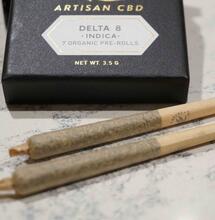Medical Cannabis Product Linked to Fungal Infection in the US

The researchers found Cryptococcus neoformans, a potentially fatal environmental fungus, at both the infection site and in the cannabis flower used by the patient. A genetic match confirmed that the cannabis was the source of the infection.
A cancer patient who utilized medical cannabis to alleviate the side effects of chemotherapy developed a severe fungal infection after using a tainted product, according to a peer-reviewed case report published in the journal Clinical Infectious Diseases. This report is the first to establish a connection between an invasive fungal infection and a medical cannabis product purchased by a patient in the U.S.
The 46-year-old patient had been diagnosed with refractory multiple myeloma, a type of blood cancer, and had previously undergone a stem cell transplant; she used medical cannabis to alleviate nausea and vomiting caused by chemotherapy. As a cardholder for medical cannabis in Pennsylvania, she obtained a variety of products—including dried flower, distillate vape cartridges, and wax—from authorized dispensaries. The patient began showing symptoms consistent with a fungal infection and was subsequently diagnosed with Cryptococcus neoformans laryngitis and meningitis.
Despite being treated with antifungal medication, she was later hospitalized due to septic shock, developed pneumonia, and ultimately passed away from cardiac arrest. According to the U.S. Centers for Disease Control, Cryptococcus neoformans infections arise when individuals inhale fungal spores from the environment. These infections are more frequently seen in those with weakened immune systems, such as individuals with HIV/AIDS or those undergoing chemotherapy. Researchers performed various tests, including whole genomic sequencing on infection strains taken from the patient’s spinal fluid. They succeeded in culturing the same fungal strain from the cannabis product, verifying that the cannabis flower was the source of the infection.
How Is This Fungal Infection Linked to Medicinal Cannabis Products?
This case is considered the first instance in which researchers have shown that the same strain of infection was found at both the infection site and within the cannabis product. “This is the first recognized case where we can definitively associate a serious fungal infection with a medical cannabis product,” the authors note. “It raises urgent concerns regarding microbial contamination and the safety of these treatments, particularly for individuals with compromised immune systems.” Calls for Caution and Enhanced Regulation While medical cannabis effectively addresses cancer-related symptoms such as chronic pain and chemotherapy-induced nausea, safety concerns have been raised.
A meta-analysis indicates that support for cannabis use in oncology research currently surpasses opposition. Nonetheless, past case reports have connected cannabis use to invasive fungal infections, with one large health insurance database study noting a 3.5-fold increase in risk. Even though C. neoformans infections are uncommon, these instances underscore the absence of standardized microbial safety testing for medical cannabis.
Researchers are urging caution among patients and healthcare providers while advocating for more stringent regulations on cannabis products sold in the U.S. “Despite medical cannabis often being available through dispensaries, both providers and patients should understand that these products do not meet the standards of regulated pharmaceuticals,” the authors express.
“In numerous states, private laboratories handle medical cannabis testing, but they do not adhere to standardized procedures. With the rising demand for non-opioid analgesics and a surge in medical cannabis usage, there is a clear necessity for thorough clinical studies and enhanced oversight of cannabis products.”
More From Soft Secrets:
Meta-analysis examines thousands of cannabis cancer studies




